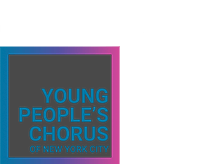Sometimes in life we get more than we bargained for, more than we expected, more than we hoped for. We were thrilled with the idea of six singers, all of whom we have cherished and written about, having their simultaneous debuts with the Mostly Mozart Festival. They are all rising stars and they would be onstage together performing the solo roles in Beethoven’s Fantasia in C minor, also known as the Choral Fantasy –a work we have never heard performed. What excitement!
We will get to the astonishing features of the rest of the program but we will start at the end, as we sometimes do. Brilliant young pianist Kit Armstrong distinguished himself in the prolonged opening of the work. Beethoven’s wild energy was captured by Mr. Armstrong’s lightning fast fingerwork in the rapid scale passages and the lyrical moments were rendered with expressive introspection.
Beethoven distributed some splendid solos to the wind instruments and we particularly admired the lengthy flute solo and the clarity of the clarinet solo. Louis Langree’s conducting style is emphatic and balletic, effectively limning all the voices of Beethoven’s orchestration.The six vocal soloists we came to hear were outstanding in their handling of the vocal lines, overlapping and weaving together in a tapestry of gorgeous sonic brilliance. One could not have asked for better singing than that delivered by sopranos Janai Brugger and Brandie Sutton, mezzo-soprano Jennifer Johnson Cano, tenors Miles Mykkanen and Jack Swanson, and bass Adam Lau. Once young artists have reached this level of international fame, we have less opportunity to write about them and were doubly thrilled.When we planned our attendance, we paid no attention to the rest of the program and were therefore non-plussed by our experience of the Young People’s Chorus of New York City, a group of which we were previously unaware. Artistic Director and Founder Francisco J. Núñez must be some kind of wizard to have pulled such performances from these youngsters.
The lovely young ladies of the chorus were flatteringly dressed in royal blue dresses with red petticoats peeking out from under the skirts and matching headbands. The voices were, of course, far more important than the garb but it would have been churlish not to mention how visually attractive a picture they presented as they entered down the side aisles and took their places onstage.
The program opened with a stunning performance of the Kyrie K.90, written by the teenage Mozart. The harmonies were absolutely exquisite. But the piece that mostly astonished us was Marcos Leite’s arrangement of Tres Cantos Nativos dos Indios Krao. There seemed to be no extant translation and none was necessary. What we heard (and we did NOT read the program in advance) were the sounds of a rainforest and a coming storm, just as effectively rendered as in Beethoven’s Sixth Symphony.
The young singers used their bodies in unison to create all kinds of natural sounds emulating birdcalls and finally raindrops falling. They clapped their hands and tapped various parts of their bodies to create a miraculous soundscape, the beauty of which brought tears to our eyes.
The thought came to us that talent knows no age. These youngsters seemed to represent a mosaic of our wonderful New York City with complete diversity of size, shape, and color. Glorious! We need not worry about the future of music!
Not only were the aisles put to use for conducting, entrances, and exits–but also the balconies, giving us a “surround sound” experience with overlapping voices in the other numbers they performed–“Hark, I Hear the Harps Eternal” and “Didn’t My Lord Deliver Daniel”.
The Young People’s Chorus was joined by the Children’s Chorus for Maestro Núñez’ own arrangement of “Ah vous dirai-je maman”. They were also wonderful. We thought a golden opportunity was missed to pair that with Mozart’s own variations on that childhood tune.
The encore was the finale of Bernstein’s Candide, a true crowd pleaser.
There were features of the programming that bothered us. Splitting up symphonies into their component movements may have been common in the 18th c. but we failed to appreciate the dissection of Mozart’s “Haffner” symphony. To our ears it was disruptive and we object to the loss of continuity and the feeling of completion we usually experience when a symphony is brought to its conclusion.
Still, we agree that the Mostly Mozart Festival Orchestra played beautifully under Maestro Langree’s dramatically wielded baton. There were places in the first movement with such suspended energy that we wanted to stage it in our mind’s eye as a scene in an opera, a scene ripe for explosion.
Although the program notes, which we finally read when we returned home, tried to justify the interpolation of songs by the Young People’s Chorus between the movements with an overall theme of youthful energy, we thought that was working very hard to justify a peculiar decision.
There was one further decision that didn’t sit well with us. We adore Bernadette Peters on the Broadway stage but choosing her as host for the evening was not a fortuitous one. Her baby-doll voice was over amplified and her reading of the narration was frequently incomprehensible. Additionally, a host should be able to name the conductor and the composer without reading from cards. Sorry, not sorry, dear readers–but we calls ’em as we hears ’em.
Read at www.vocedimeche.com .
